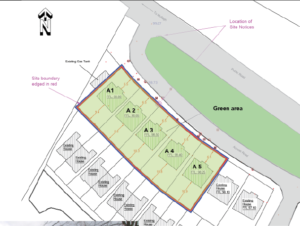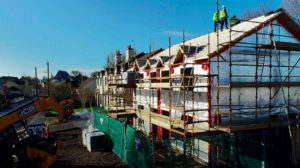Investing in property is hard even before you come across all the financial terminology. Here at Property Bridges, we have outlined and explained some of the most used terminology and what it actually means such as LTV, LTC, LTGDV, GDV, NDV, security and what is actually a strong interest return? Please do not hesitate to get in contact should you have any further queries.
- Loan to Value (“LTV”)
The LTV ratio is an assessment of lending risk that Property Bridges examines before approving a loan. The LTV ratio is a critical component of development loan underwriting in the industry. At Property Bridges, we will lend to a maximum of 70% LTV.
An LTV ratio is calculated by dividing the amount borrowed by the appraised value of the completed development, expressed as a percentage. For example, if a borrower intends to develop a housing development valued at €1,000,000 upon completion, he/she will have to put in a minimum of €300,000 of their own money into the development and could borrow a maximum of €700,000 resulting in an LTV ratio of 70% (i.e., €700,000/€1,000,000).
In practical terms, an LTV of 70% gives Property Bridges protection against a 30% price in the development value. Further to the €1,000,000 property value example above, a 30% drop in the development value to €700,000 will equal the amount Property Bridges lent. Should the property need to be sold in the case of default, Property Bridges have first claim to the €700,000 of the sales proceeds while the borrower’s €300,000 equity is eliminated as it is unsecured.


- Loan to Cost (“LTC”)
Closely related to LTV ratio, an LTC ratio is calculated by dividing the amount borrowed by the hard cost of building the development, expressed as a percentage. For example, if a borrower has a budget for a development of €1,000,000 upon completion and puts in €100,000 into the development, he/she could borrow €900,000 resulting in an LTC ratio of 90% (i.e., €900,000/€1,000,000). At Property Bridges, we will lend to a maximum of 90% LTC. The reason we lend to a higher LTC is that building cost is less volatile than property value.
- Gross Development Value (“GDV”)
GDV is the estimated value that a property or new development would fetch on the open market if it were to be sold in the current economic climate. For a housing or apartment scheme, it is the number of units by the market price for each unit.
- Net Development Value (“NDV”)
Building upon GDV, NDV is one step further and calculates the value of the development once all costs are taken into account such as VAT, tenant incentives such as letting voids etc.
At Property Bridges, we actually value our loans against the NDV which is LTNDV.
- First Charge Security
Legal charges are a method of securing debts. If the borrower reneges on the terms of the agreement, Property Bridges has the right to enforce the legal charge without going through a court. This is done by appointing a receiver.
Property Bridges will only lend where it can secure a First Charge. Numerous charges can be created against the same property by more than one lender. The lender in whose favour charge is first created is called holder of ‘First Charge’. If a subsequent charge is created in favour of a different lender against the same assets on which the first charge already exist, the subsequent charge holder is called as the holder of the second charge and so on.
The key point of the first charge is that it will always rank first in the queue should recovery be needed. The second charge will always rank behind the first charge and so on.
- Rate of Interest Rate Return Versus Risk
Property Bridges offers investors the opportunity of up to 9% per annum return. But is this a good return? What should investors measure it against? In general, the greater the return an investor seeks, the greater risk he/she will need to take. As a rule of thumb, the least risky investment an investor can take is leaving their money on deposit. As of May 2020, the average Irish high street bank will reward your risk with an interest rate of less than 0.1%. Property Bridges’ potential 9% interest rate takes into the account of development risk (i.e. budget overruns) and exit risk (i.e. will the sales price of each unit upon completion decrease thus making the development loss making?).
On the other hand, Property Bridges manages this risk by lending to established developers, having a conservative max of 70% LTV (to protect against a land value drop up to 30%), securing a first charge (to be top of the queue should the property need to be sold to recoup the money lent out) and often lending to developers who have pre-sold housing developments to local authorities and/or approved housing bodies (this hedges against the sales price dropping upon completion).


